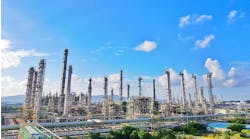Its Time to Review Your Plant Energy Systems
Once a year, review your basic energy systems to see how well they do against accepted industry practices, your goals and last year and five years ago. For some who have Energy Management System software, this job is relatively easy, but it doesn’t hurt to also do a field check to confirm that things are up to date. So, let’s review what to look for in your energy system.
Motors – Motor efficiency doesn’t change much over time with proper maintenance, but, it’s a good time to review which motors were repaired and why. A hot running motor is a sign of age or poor health. It also shows inefficiency or below average performance. Check actual output versus current to get an idea of true efficiency. Also review your motor purchase policy. NEMA premium motors run cooler and on average have less wear, saving energy and maintenance.
Hydraulics – Hydraulics is used here as a catchall for pipe movement systems. Look at pump outputs, valve positions, and spillbacks to see if a lot of energy is wasted in unnecessary recycle or high pressure drops. It’s possibly the most hidden energy waster in plants. If you’ve been at reduced rates for a long time, or have changed configurations without revisiting the hydraulics, you’re possibly wasting a lot of energy. You may be able to justify downsizing a pump or impeller. Variable speed or adjustable speed drives that work without reducing efficiency also may be an option.
Insulation – This has been neglected more often lately. Fixing insulation comes out of the maintenance budget, but the savings are very difficult to see on the bottom line. Some plants set aside capital for insulation, but capital budgets are always being downsized. However you set your budget, prioritize insulation needs, and calculate a return for each fix. Then insulate based on the priorities.
Air system – Typically an area of high waste. If you lease an air compressor to supplement your system, then consider an air audit. One technician walking the lines with a sonic device can save more than the monthly leasing charge and the energy it takes to run the compressor.
Steam – If you look at the steam system’s true efficiency, you would be shocked. Steam is the industry’s most abused power and heat source. If you don’t have an in-plant team dedicated to steam, find an industry expert to do a thorough look at least once a year.
Fired heaters – Another large topic, but they can cost a ton of money. If you don’t do monthly checks, do an annual heater system health check. If you do, review your numbers and compare results versus design. Best practice is lower than 370ºF stack temperature and 2% oxygen in flue gas. If you cannot match those numbers, there’s money to be made.
Engineering – Many problems stem from inefficient designs. Review engineering practices and if there’s a written energy design policy, see how well they’ve followed it. If not, check to see if they typically follow industry best practices.
Energy purchases – If there’s not a person with an understanding of plant options actively looking at energy purchases, look at the purchases yourself. Read and become familiar with electric and natural gas contracts and any clauses concerning reserve, peak demand, minimum purchases, and tiers. If there is such a person, ask that person what can be done to save energy under the current contracts. Equally important, make sure that person knows of any event that may affect future demand. A correctly written contract may not save energy, but it can save on the cost of the energy used.
Non-process systems – Some plants think it’s foolish to waste time on non-process efficiency, but they use as well as waste a lot of energy. Heat, lighting, air conditioning, in-plant transportation, and personnel equipment add up. In this economy, every dollar counts. Review or create some policies. Check plant lighting to see if it stays on all day. Concern for non-process energy sends the right message to all plant personnel.
Energy management – These systems also need to be checked to ensure they’re up-to-date and working. Whether you have computer software or written procedures, do an annual review to check the system meets expectations. An annual review keeps interest high and makes sure you’re getting true energy savings.
Reviewing your system takes time, but if you create a checklist while doing your review, your next review will be so much better. This annual checkup will help you sustain your savings over time.
Gary Faagau is Chemical Processing's Energy Columnist. You can e-mail him at [email protected].

